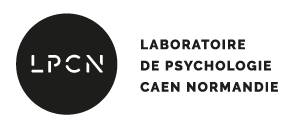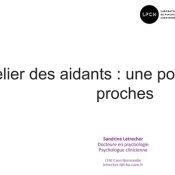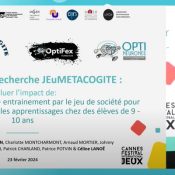
Fabien Bitu est doctorant au LPCN, il prépare une thèse en Psychologie intitulée « Les bénéfices de l’interface tactile numérique sur les capacités cognitives : comment la tablette tactile numérique, au travers de la créativité, peut-elle améliorer les fonctions exécutives d’enfants d’âge scolaire ? », sous la direction de Michèle Molina (PR, LPCN) et Béatrice Galinon-Melenec (PR, IDEES, Le Havre Normandie Université).
Il vient de publier un nouvel article :
Bitu, F., Galinon-Mélénec, B., & Molina, M. (2022). Modifying sensory afferences on tablet changes originality in drawings. Frontiers in Psychology, 13:806093. doi: 10.3389/fpsyg.2022.806093
Celui-ci a été accepté par la revue Frontiers in Psychology (SCIMAGO-SCOPUS Q1, SJR 2021 0.87, IF 3.88, H-index 133).
Il est accessible à partir de ce lien.
Abstract:
According to some recent empirical studies revealing that creativity is linked to sensorimotor components, the current research was aimed at evaluating whether sensory afferences could modulate originality in drawing of children and adolescents. Sixty-nine children from 1st, 3rd, 6th, and 8th grades were required to produce a man who exists and a man who doesn’t exist with fingers or stylus on a tablet and with a pen on paper. Drawings were assessed with an originality scale comparing original drawings to unoriginal ones. Since, in comparison to drawings made on paper with a pen, drawing with fingers enhances proprioceptive information, this condition was expected, according to cognitive load theory, to favor originality in drawing by reducing cognitive resources devoted to motor control of the graphic gesture (lowering intrinsic load). On the contrary, since the use of a stylus involves a proprioceptive loss of information, which enhances intrinsic load by increasing cognitive resources devoted to motor control, it was expected that drawing with a stylus on the tablet would lead to the least original drawings. Results only partially confirmed these hypotheses. While the use of fingers on the tablet led to the highest original scores, using a stylus on the tablet did not impair originality in drawing of children and adolescents. On the opposite, the use of a stylus led 3rd–8th graders to perform better than with pen on paper. This modulation of the tool on originality does not confirm the hypotheses formulated in accordance with the cognitive load framework. However, it could be explained according to an embodied perspective of creativity considering the creative process as relying on a sensorimotor prediction process in which sensory afferences are central to generating and evaluate creative ideas. This research opens new avenues on creativity and proposes to consider the development of predictive motor control as a significant part of creativity development.
Cet article fera l’objet d’une communication orale intitulée “Sensory afferences in children’s creativity” lors du 22ème congrès de European Society for Cognitive Psychology (ESCoP) du 29 aout au 1er septembre, à Lille.






